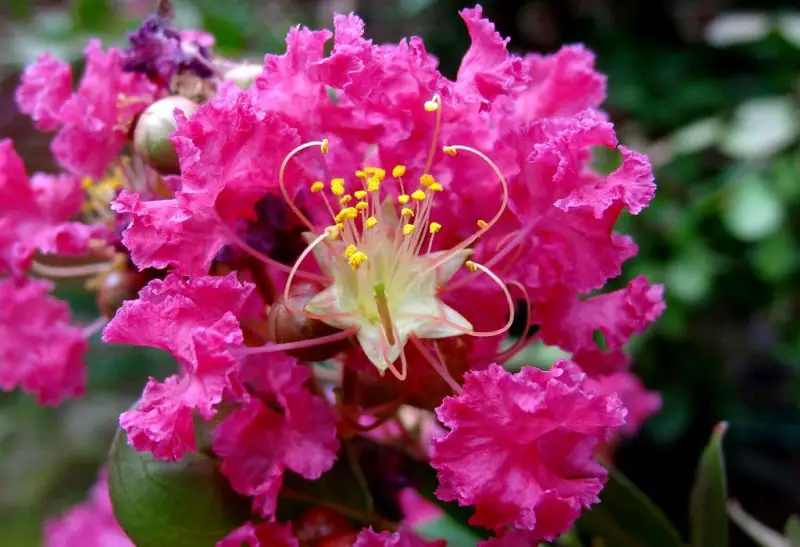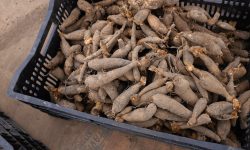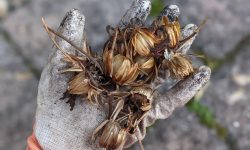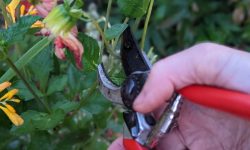Crape myrtle is a stunning ornamental tree, celebrated for vibrant summer blooms and colorful bark. Planting at the right time is essential for strong roots, healthy growth, and abundant flowers. Gardeners must consider local frost dates, soil type, and sunlight exposure to ensure successful establishment. Correct timing reduces transplant shock and allows young trees to adapt naturally.
Choosing the ideal season also maximizes long-term garden beauty. Well-planned planting ensures vigorous growth, dense foliage, and spectacular flowering. Combined with proper site preparation, watering, and care, crape myrtles provide years of visual appeal. By understanding seasonal patterns and planting needs, gardeners can enjoy lush, colorful displays that transform any landscape into a vibrant, flourishing garden.
Understanding the Growth Cycle of Crape Myrtle

Crape myrtle has distinct growth phases that influence planting and care. Spring triggers new shoots and leaf development. Summer is the main flowering season, producing vibrant blooms. In fall, the tree forms seed pods while preparing for winter dormancy. Winter is a resting period with minimal activity, allowing energy to conserve for the next growth cycle. Understanding these phases helps gardeners plan planting, pruning, and watering efficiently.
Planting in alignment with growth cycles enhances establishment success. Spring planting in temperate regions ensures roots develop before heat stress. Fall planting works in warmer climates but carries frost risks in colder zones. Awareness of these natural patterns allows gardeners to predict growth, bloom timing, and care requirements. Young trees that follow this cycle develop stronger stems, deeper roots, and healthier foliage.
Knowledge of the growth cycle also guides maintenance practices. Proper pruning schedules, fertilization timing, and irrigation align with each phase. Trees that establish roots early produce denser branches and larger blooms. Flowering is more abundant and longer-lasting. By respecting the natural rhythm of crape myrtle, gardeners maximize aesthetic impact while promoting long-term health and resilience in their landscape.
Choosing the Best Season to Plant
Selecting the ideal season for planting crape myrtle depends largely on climate. In temperate regions, early spring after the last frost is perfect. Young trees establish roots before summer heat arrives. Adequate root development ensures stronger growth, better flowering, and reduced transplant shock. Timing planting with favorable weather also allows the tree to adapt gradually to its new environment.
In warmer southern climates, late summer or early fall planting can be successful. Soil remains warm, promoting root growth before cooler winter months. However, planting during extreme heat or cold can stress young trees and stunt development. Gardeners should also consider seasonal rainfall, ensuring newly planted trees receive adequate moisture without waterlogging. Correct seasonal timing sets the stage for long-term health and abundant blooms.
Proper seasonal planting directly impacts flowering success. Trees planted at the right time produce more consistent, vibrant blooms. Maintenance becomes easier, as healthy roots and stems support dense foliage. Combining correct timing with appropriate site preparation, watering, and care guarantees that crape myrtles thrive. With thoughtful planning, your garden will enjoy stunning summer flowers, robust growth, and long-lasting beauty.
Preparing the Soil and Planting Site
Assessing and Improving Soil
Healthy soil is essential for crape myrtle success. Begin by testing the soil’s pH, which should be slightly acidic to neutral. Amending the soil with organic matter like compost or aged manure improves fertility and drainage. Well-draining soil prevents root rot and encourages strong root development. Avoid planting in heavy clay areas that retain water, as this can stunt growth and reduce flowering.
Loosening compacted soil allows roots to penetrate easily and establish quickly. Adding sand or perlite can enhance drainage in problematic spots. Ensure essential nutrients like nitrogen, phosphorus, and potassium are balanced to support healthy foliage and blooms. Preparing the soil thoroughly creates a solid foundation for long-term tree health. Properly amended soil improves survival rates, encourages vigorous growth, and maximizes flower production for years to come.
Selecting and Preparing the Planting Site
Choose a site that receives at least six hours of full sun daily. Crape myrtles perform best in sunny locations with good air circulation. Avoid shaded areas, where blooms are sparse and disease risks are higher. Adequate spacing between trees reduces competition for nutrients and prevents overcrowding, supporting better growth and larger flowers.
Clear the site of weeds, debris, and rocks to reduce stress on young trees. Dig a hole wider than the root ball to allow roots to spread naturally. Loosen the roots gently before planting and backfill with enriched soil. Water thoroughly after planting to settle the soil around roots. A carefully prepared site ensures healthy establishment, supports vigorous growth, and promotes abundant flowering for the life of the tree.
Choosing the Right Crape Myrtle Variety
Selecting the right crape myrtle variety is key for garden success. Varieties differ in height, flower color, and bloom duration. Dwarf types suit small spaces and containers. Taller varieties are ideal for large gardens and landscape accents. Consider the tree’s mature size to avoid overcrowding or shading other plants. Choosing a variety adapted to your local climate ensures better growth and flowering.
Flower color is another important factor. Crape myrtles come in shades of pink, red, purple, and white. Some cultivars offer multi-colored blooms or extended flowering periods. Color preference should complement your garden design. Observing bloom season and intensity helps predict how long your garden will enjoy vibrant displays. Different varieties may also vary in disease resistance and maintenance needs.
Additionally, disease resistance and hardiness matter. Some varieties resist powdery mildew and fungal infections. Choosing resistant types reduces chemical use and ensures healthy foliage. Hardy varieties tolerate local temperature extremes and soil conditions. Combining size, color, and resilience creates a thriving garden. With careful selection, your crape myrtle will provide stunning flowers, strong growth, and long-lasting beauty. Proper planning maximizes both aesthetic impact and long-term plant health.
Planting Techniques for Success
Proper planting techniques ensure crape myrtles establish quickly and thrive. Begin by digging a hole slightly wider than the root ball. This allows roots to spread naturally. Loosen the soil at the bottom and sides to reduce compaction. Removing debris and large rocks ensures roots grow without obstruction.
Position the tree so the top of the root ball is level with the surrounding soil. Backfill gradually, pressing soil gently to eliminate air pockets. Water thoroughly after planting to settle soil and hydrate roots. Avoid overwatering, which can lead to root rot. Mulching around the base helps retain moisture and regulate soil temperature, reducing stress on young trees.
Support the tree with stakes if necessary, especially in windy areas. Keep mulch away from the trunk to prevent disease and pest problems. Early care, including consistent watering and protection from extreme conditions, improves survival rates. Correct planting techniques, combined with suitable soil and location, set the foundation for vigorous growth. Trees planted carefully develop strong roots, healthier foliage, and abundant summer blooms.
Watering and Fertilization Tips
Watering Practices for Healthy Growth
Proper watering is crucial for crape myrtle establishment and flowering. Young trees require consistent moisture for root development. Water deeply once or twice a week, depending on soil type and weather conditions. Avoid shallow watering, which encourages weak, surface roots.
Once established, crape myrtles tolerate some drought. However, regular watering during dry spells promotes robust growth and abundant blooms. Mulching around the base conserves moisture, regulates soil temperature, and reduces weed competition. Always keep mulch a few inches away from the trunk to prevent rot and pests. Consistent care ensures healthy foliage and vibrant summer flowers.
Fertilization Techniques
Crape myrtles benefit from balanced fertilization to support growth and flowering. Use a slow-release fertilizer in early spring before new growth emerges. This provides essential nutrients for root and stem development. Avoid over-fertilizing, especially with high nitrogen, which encourages leafy growth at the expense of blooms.
Supplementing with organic matter, such as compost or aged manure, improves soil fertility and structure. Fertilize again after the first bloom to encourage a second flowering cycle. Proper fertilization, combined with adequate watering, supports strong roots, dense foliage, and long-lasting flowers. Regular monitoring and adjustment ensure the tree remains healthy and productive.
Pruning Techniques for Maximum Blooming
Timing and Importance of Pruning
Pruning crape myrtles at the right time boosts flower production. Late winter or early spring is ideal. This is before new growth begins, ensuring branches produce strong stems and abundant blooms. Avoid heavy pruning during summer or fall, which can reduce flowering and weaken the tree.
Regular pruning removes dead or diseased wood and encourages air circulation. Correct timing allows sunlight to reach inner branches. Healthy branches develop more flowers and maintain balanced growth. Pruning at the proper time ensures a long-lasting display and improves overall tree vitality.
Pruning Methods for Optimal Growth
Selective pruning focuses on removing weak, crowded, or crossing branches. Cut back old, non-productive stems to encourage new shoots. Thin out the canopy to prevent shading of lower branches. This promotes a uniform shape and maximizes sunlight exposure for flowering.
Avoid topping or excessive pruning, which damages the tree and reduces blooms. Use clean, sharp tools to make precise cuts. Disinfect tools between cuts to prevent disease. Consistent and careful pruning leads to denser flowers, healthier foliage, and a more aesthetically pleasing tree. These methods ensure your crape myrtle thrives year after year with vibrant, long-lasting blooms.
Pest and Disease Management
Common Pests and Their Control
Crape myrtles are susceptible to pests including aphids, Japanese beetles, and scale insects. These insects feed on leaves, stems, and flowers, causing stunted growth and reduced blooms. Early detection is vital to prevent infestations from spreading. Regularly inspecting branches and foliage allows gardeners to identify and treat problems promptly. Healthy trees are less prone to severe damage, making routine monitoring crucial.
Biological controls such as ladybugs, lacewings, and predatory wasps effectively reduce aphid populations. Insecticidal soaps or horticultural oils provide targeted chemical control for heavier infestations. Avoid excessive pesticide use to protect beneficial insects and maintain ecological balance. Integrating pest management with proper watering, pruning, and fertilization helps crape myrtles resist insect damage and produce abundant flowers consistently throughout the growing season.
Managing Diseases
Fungal diseases like powdery mildew, sooty mold, and leaf spot can affect crape myrtles. These fungi thrive in humid conditions with poor air circulation. Pruning crowded branches improves airflow, reducing the risk of fungal outbreaks. Avoid overhead watering to prevent wet foliage, which encourages disease growth.
Planting disease-resistant varieties offers long-term protection against common pathogens. Remove infected leaves and dispose of them away from the garden to limit spread. Fungicides may be required for severe infections, but should be applied according to label instructions. Consistent monitoring, combined with good cultural practices, ensures crape myrtles remain healthy, vigorous, and capable of producing vibrant, long-lasting blooms year after year.
Mulching and Ground Care
Benefits of Mulching
Mulching is one of the most effective ways to support crape myrtle health. A thick layer of organic mulch, such as wood chips, bark, or shredded leaves, helps conserve soil moisture. It keeps roots cool in hot weather and reduces evaporation, allowing the tree to maintain steady growth. Mulch also suppresses weeds, limiting competition for nutrients, water, and sunlight. As it decomposes, it naturally enriches the soil with essential nutrients, improving soil structure and fertility.
Proper placement and depth of mulch are critical. Spread mulch in a 2-4 inch layer, keeping it a few inches away from the trunk to prevent rot and pest infestations. Avoid piling mulch directly against the base, which can suffocate roots and attract insects. Replenish mulch periodically to maintain consistent coverage, especially after heavy rains or wind. Regular mulching strengthens root systems, encourages lush foliage, and enhances the vibrancy and longevity of blooms throughout the growing season, ensuring the crape myrtle thrives in your garden.
Ground Care Practices
Proper ground care is essential for healthy crape myrtles. Maintaining well-drained soil prevents root rot and promotes strong growth. Loamy or sandy soil works best, as it supports proper water absorption while allowing excess water to drain. Avoid compacted soil, which restricts root expansion and reduces nutrient uptake. Adding organic matter, such as compost or mulch, enriches the soil naturally. Mulching also helps retain moisture, regulate soil temperature, and suppress weeds around the base of the tree. Regularly checking soil pH ensures optimal conditions for nutrient availability.
Weeding is another important aspect of ground care. Removing competing plants prevents them from stealing nutrients and water. Keep the area around the tree base clean from debris to reduce fungal and pest risks. During dry periods, provide deep, infrequent watering to encourage deep root development. Shallow, frequent watering can lead to weak roots and less resilient trees. By combining proper soil preparation, mulching, and regular maintenance, gardeners ensure crape myrtles develop strong root systems. Healthy roots translate into vibrant foliage, abundant flowers, and long-lasting beauty in the garden.
Seasonal Care Tips
Spring and Summer Care
Spring is the most important season for crape myrtle growth and flowering. Begin by clearing away winter debris and checking for any frost damage. Apply a balanced, slow-release fertilizer to encourage new growth and strong flower buds. Consistent watering during spring ensures roots remain hydrated, supporting healthy leaf and flower development. Regular inspection for pests or diseases helps catch problems early.
During summer, focus on maintaining soil moisture and tree health. Mulch helps regulate soil temperature and retain water. Monitor leaves and stems for aphids, beetles, or fungal issues. Remove dead or diseased branches promptly to allow airflow and prevent disease. Adequate sunlight exposure and proper hydration maximize flowering potential. With attentive care in spring and summer, your crape myrtle will display vibrant, long-lasting blooms.
Fall and Winter Care
Fall preparation begins with gradually reducing water as temperatures decline. This helps roots adjust to cooler conditions. Remove fallen leaves, branches, and garden debris to prevent fungal growth and disease spread. Light applications of slow-release fertilizer strengthen roots before winter dormancy. Protect young or sensitive crape myrtles with burlap, frost cloth, or other coverings in regions with freezing temperatures. These steps help the tree conserve energy and maintain health during colder months.
During winter, watering should be minimal, just enough to prevent extreme dryness. Avoid heavy pruning, which can stress the tree and reduce its resilience. Focus on removing only damaged, diseased, or crossing branches to maintain structural integrity. Monitor occasionally for frost or pest damage, addressing issues promptly to prevent long-term harm. Proper fall and winter care ensures that the crape myrtle survives dormancy successfully. In spring, the tree emerges with vigorous growth, strong roots, and abundant blooms. Consistent attention during these seasons builds a healthy, resilient tree that thrives year after year, delivering vibrant flowering and overall garden beauty.
Troubleshooting Common Problems
Short Bloom Periods
A short bloom period is a frequent issue with crape myrtles. High summer temperatures, prolonged drought, or environmental stress often cause flowers to fade rapidly. Choosing a mix of early and late-blooming varieties is essential. Staggered planting ensures a continuous display of flowers throughout the growing season, preventing gaps in the garden’s color palette.
Providing partial shade during peak afternoon heat can protect delicate petals. Mulching around the base helps retain soil moisture and regulate root temperature. Consistent watering encourages strong flower development, while regular deadheading redirects energy from old blooms to new ones. Monitoring environmental factors such as sun exposure, soil quality, and hydration allows gardeners to maximize the flowering duration. With these strategies, crape myrtles can maintain vibrant, long-lasting blooms, resulting in a fuller and more dynamic display that enhances the garden’s visual appeal throughout spring and summer.
Lack of Blooms Despite Healthy Growth
Sometimes crape myrtles produce lush green foliage but few or no flowers. Excess nitrogen, insufficient sunlight, or crowded planting conditions often cause this problem. Reducing nitrogen fertilizer and ensuring at least six hours of direct sunlight daily promotes proper flower formation.
Thinning plants improves air circulation and reduces competition for nutrients. Pruning overcrowded or crossing branches allows sunlight to penetrate deeper into the canopy, supporting bud development. Adjusting soil conditions, fertilization, and light exposure restores healthy blooming cycles. Once corrected, the tree produces abundant, vibrant flowers that create an eye-catching garden centerpiece. Consistent attention to spacing, nutrition, and pruning ensures crape myrtles remain reliable and visually stunning each season.
Pest and Disease Issues
Crape myrtles are prone to pests such as aphids, scale insects, and caterpillars, as well as fungal diseases like powdery mildew. Regular inspections help detect infestations early, preventing severe damage to leaves and flowers. Prompt intervention is key to maintaining healthy growth.
Natural remedies like neem oil, insecticidal soap, and introducing beneficial insects can control pests effectively. Removing infected or damaged plant parts reduces the spread of disease. Ensuring proper spacing, air circulation, and avoiding overhead watering minimizes fungal issues. Regular maintenance and preventive care enhance plant resilience, supporting strong root systems and abundant flowering. Vigilance and timely action allow gardeners to enjoy long-lasting, vibrant blooms and maintain crape myrtles that thrive for years.
FAQ – Common Questions About Crape Myrtle
When is the best time to plant crape myrtle?
The ideal time to plant crape myrtle is in early spring or fall. Spring planting allows the tree to establish roots before summer heat, while fall planting benefits from cooler temperatures. Proper timing ensures strong growth, improved flowering, and reduced transplant shock, giving your crape myrtle a healthy start in your garden.
How do I extend the blooming period of crape myrtle?
To extend flowering, plant a mix of early, mid, and late-blooming varieties. Regular deadheading of spent flowers encourages new buds. Ensure consistent watering, mulching, and proper fertilization. Avoid excessive nitrogen fertilizer, which promotes leafy growth instead of blooms. Careful seasonal management maximizes bloom duration.
What are common pests and diseases of crape myrtle?
Crape myrtles are susceptible to aphids, scale, and powdery mildew. Regular inspections help detect issues early. Natural pest control, such as neem oil or beneficial insects, is effective. Proper pruning, spacing, and avoiding overhead watering reduce disease risks. Timely care ensures healthy, long-lasting growth and abundant flowering.
How should I prune crape myrtle for best results?
Prune damaged, crossing, or crowded branches during late winter or early spring. Avoid excessive pruning, which can reduce flowering. Focus on maintaining natural tree shape and allowing sunlight and air to reach the inner canopy. Proper pruning improves flower production and overall tree health.
What soil and sunlight conditions are ideal for crape myrtle?
Crape myrtles thrive in full sun, receiving at least six hours daily. Well-draining soil is essential to prevent root rot. Sandy or loamy soil supports healthy growth and flowering. Adequate sunlight and nutrient-rich, well-drained soil produce vibrant blooms and strong, resilient trees.
Conclusion
Caring for crape myrtle with attention to planting time, soil, and sunlight ensures stunning blooms year after year. Combining proper pruning, watering, and pest management extends flowering and strengthens the tree. By understanding seasonal needs and applying consistent care, gardeners can enjoy vibrant colors, lush foliage, and long-lasting beauty. Whether in a backyard or landscape, crape myrtles reward dedication with eye-catching displays. Thoughtful maintenance transforms these resilient trees into a garden centerpiece, providing joy and elegance throughout every growing season.






